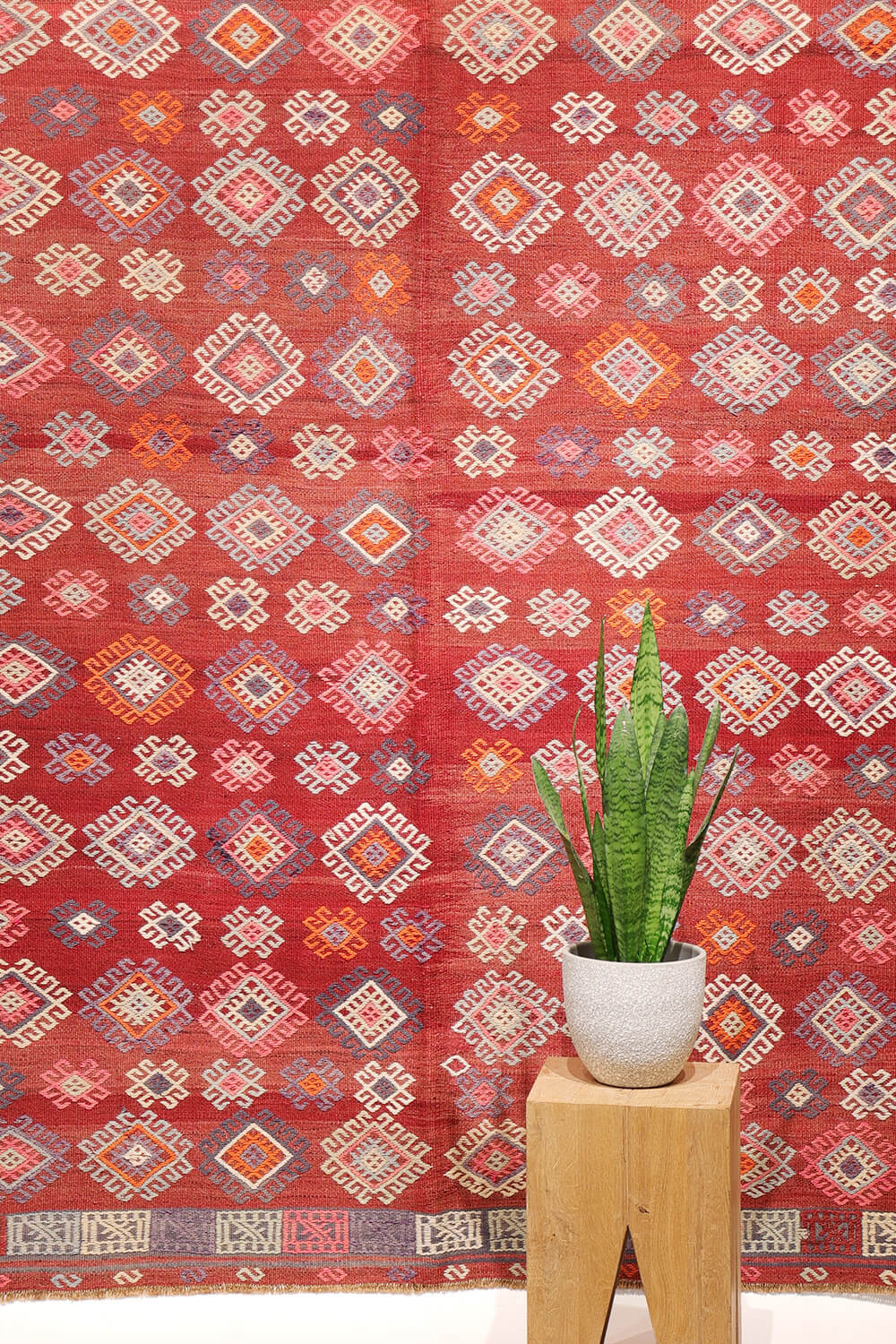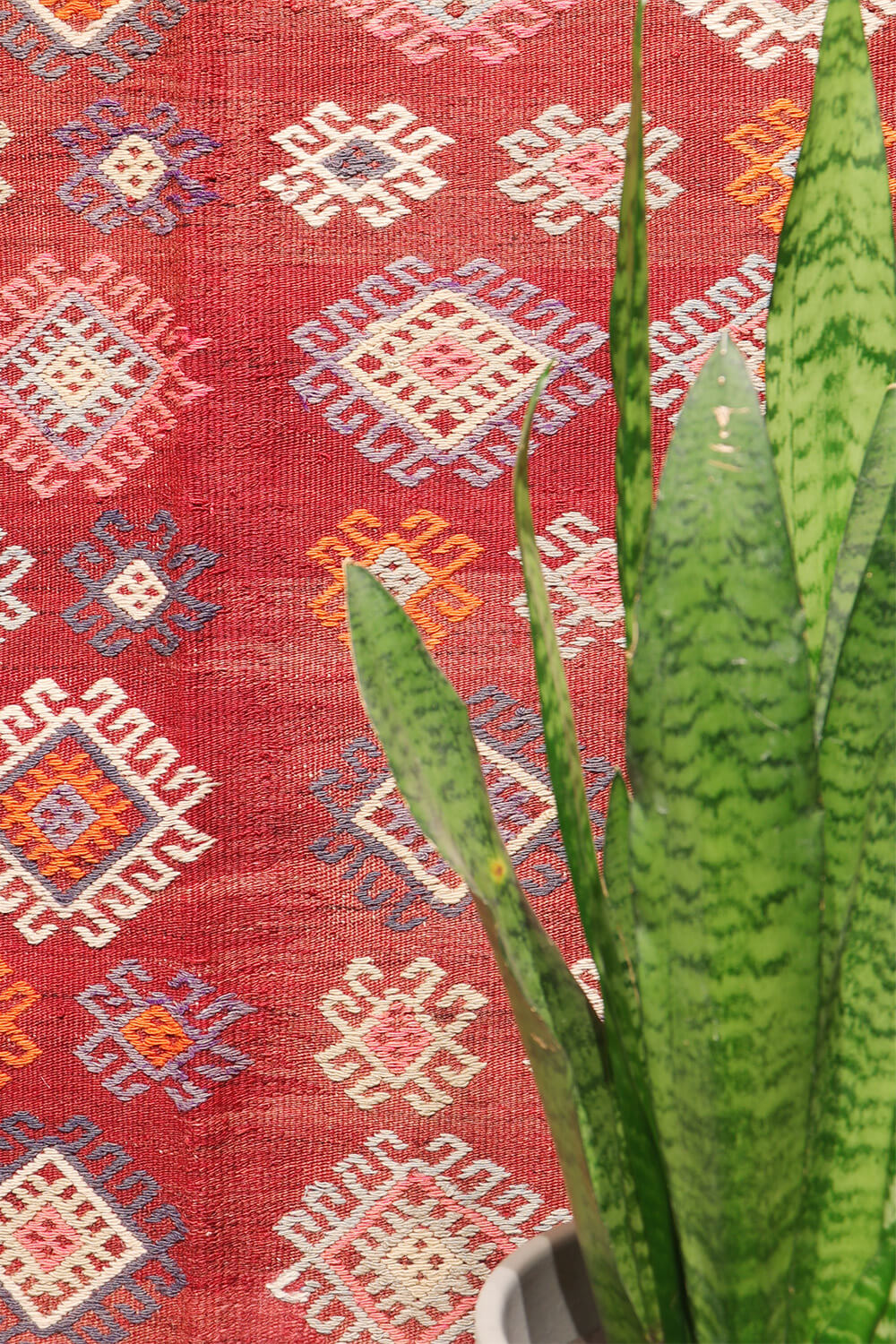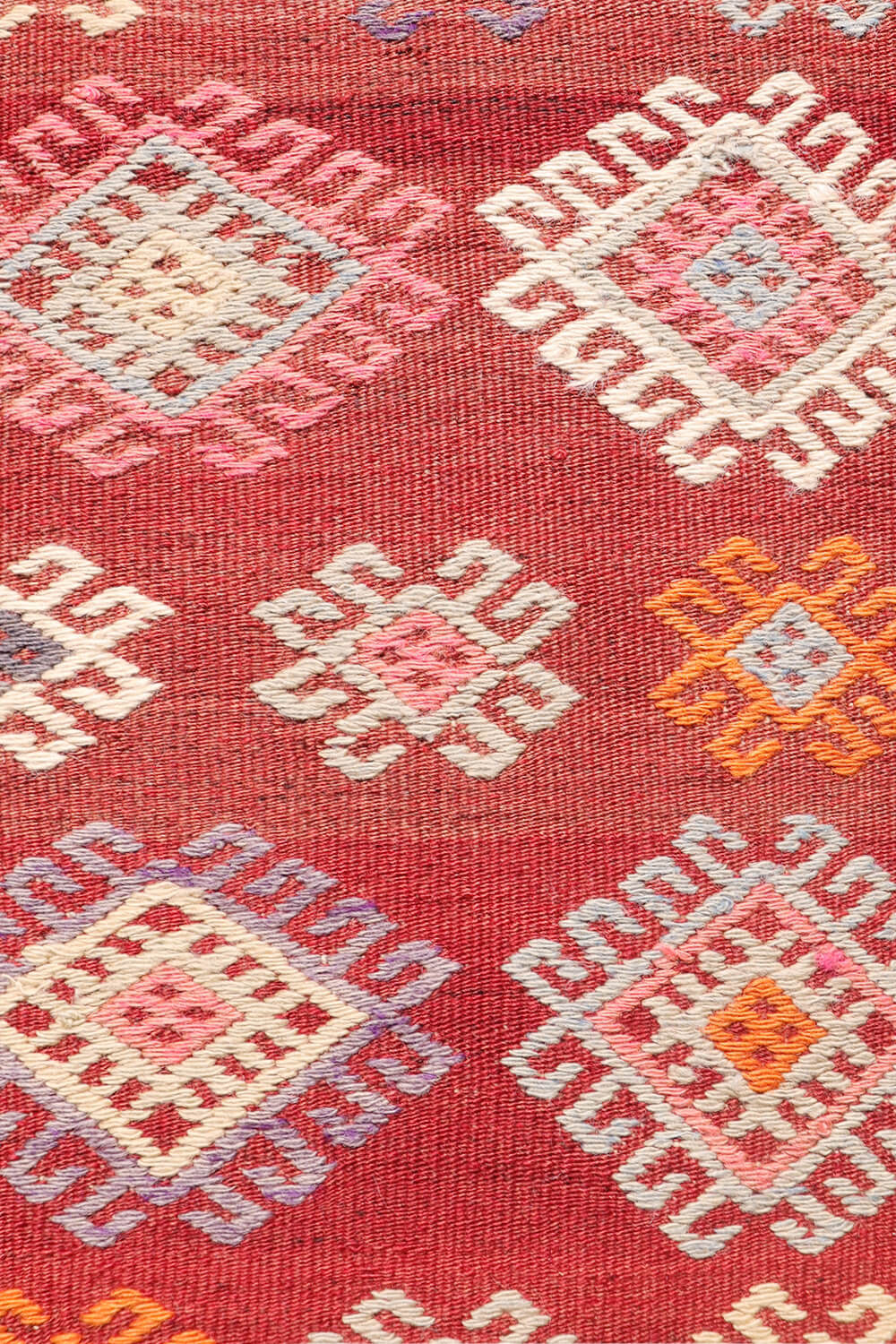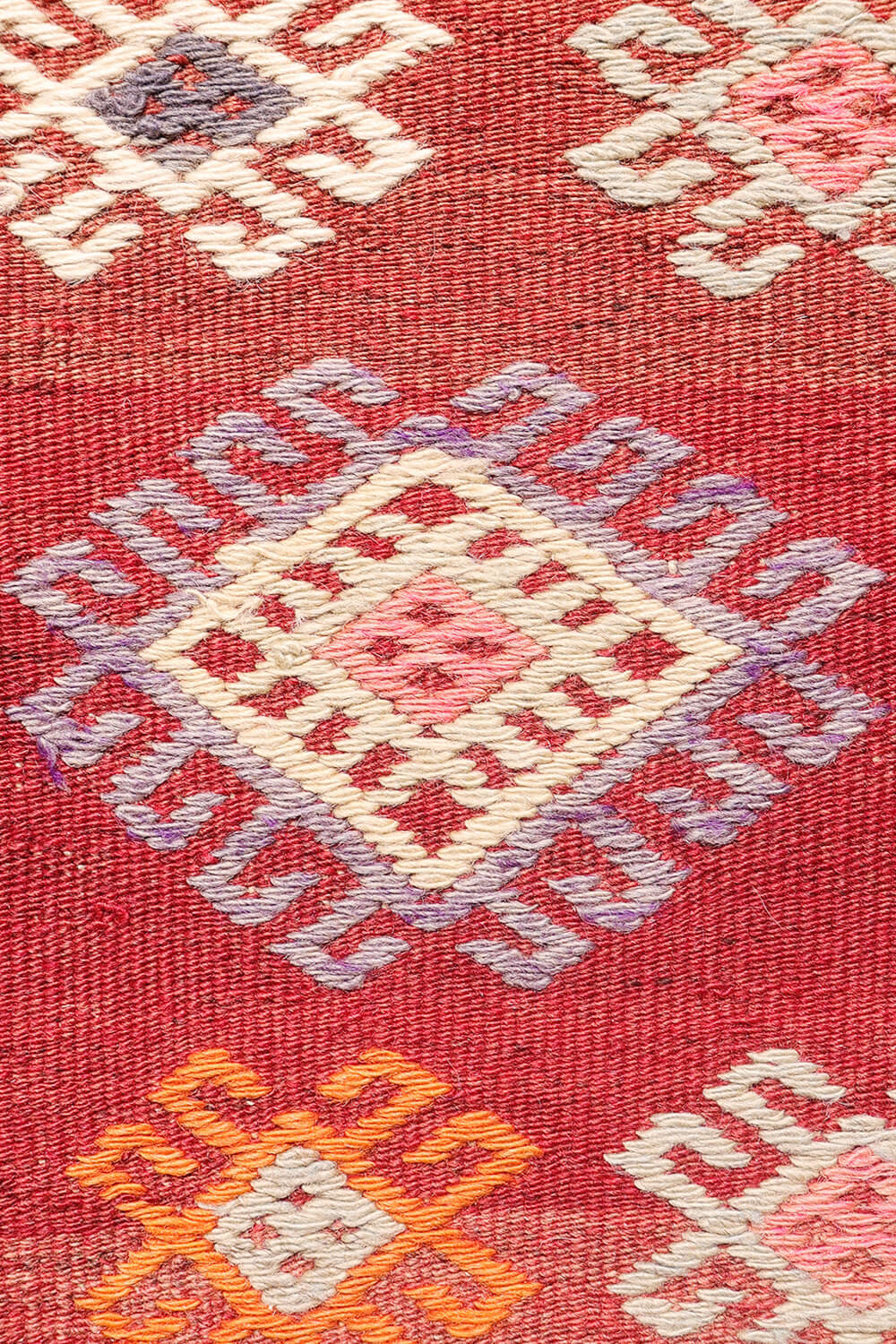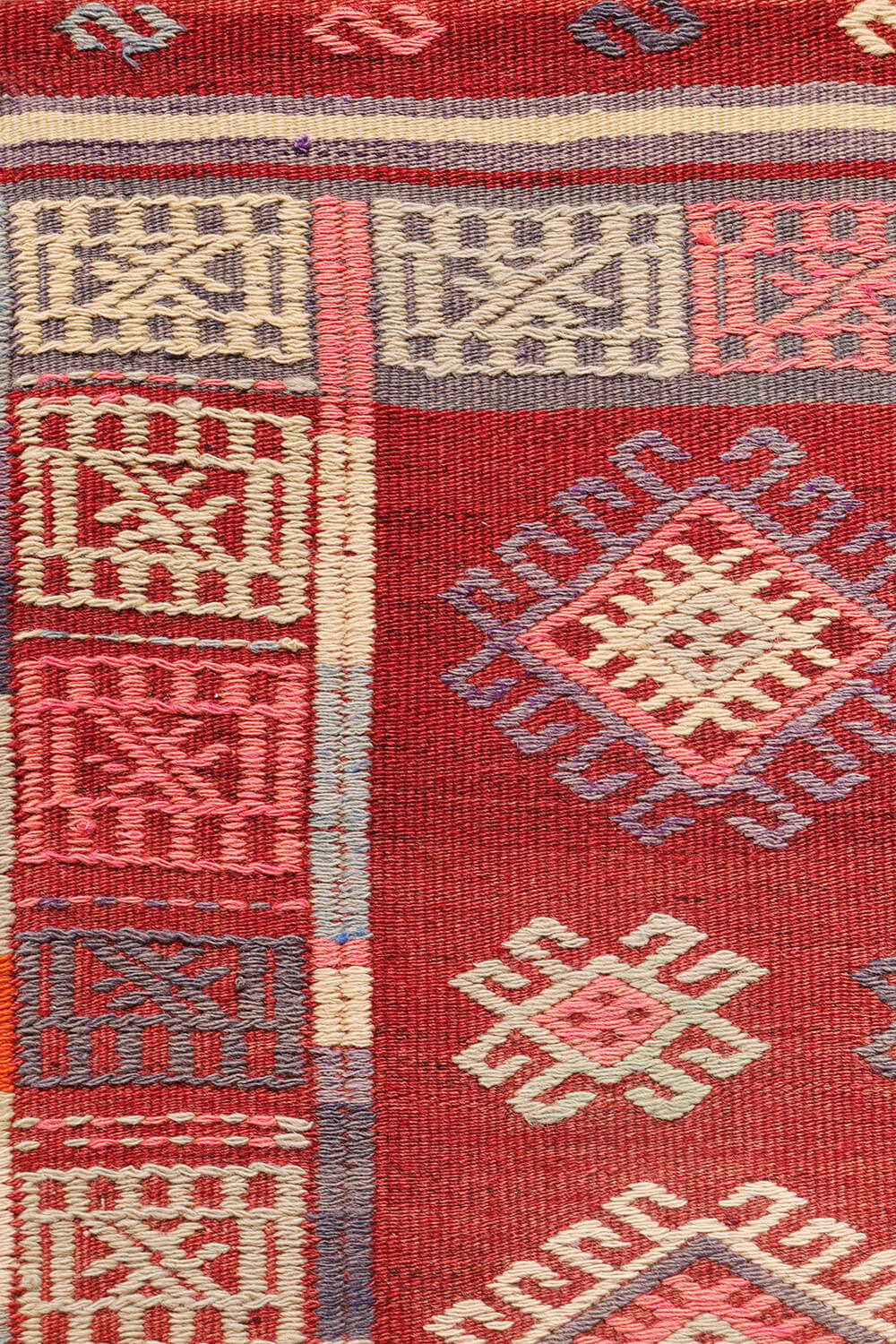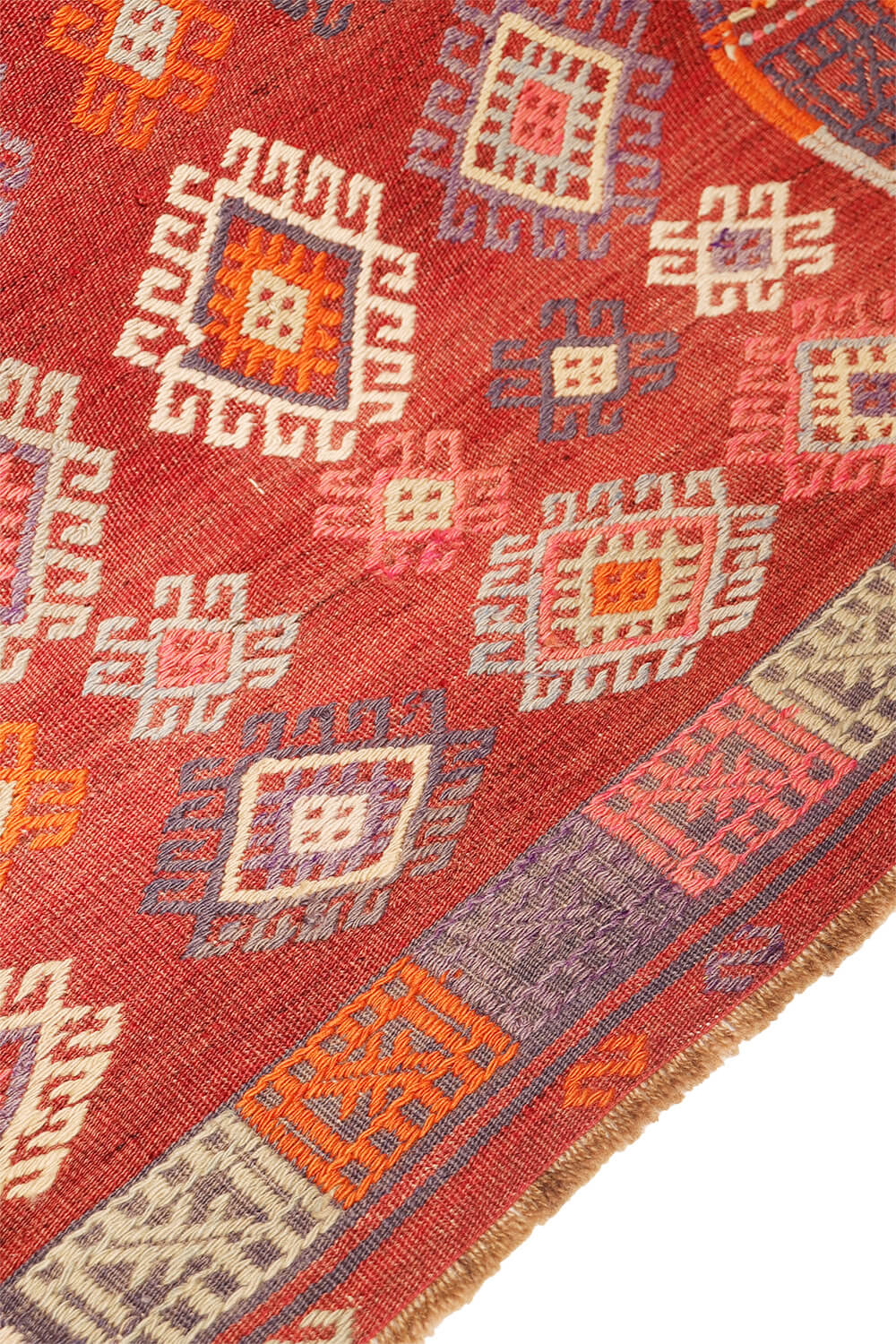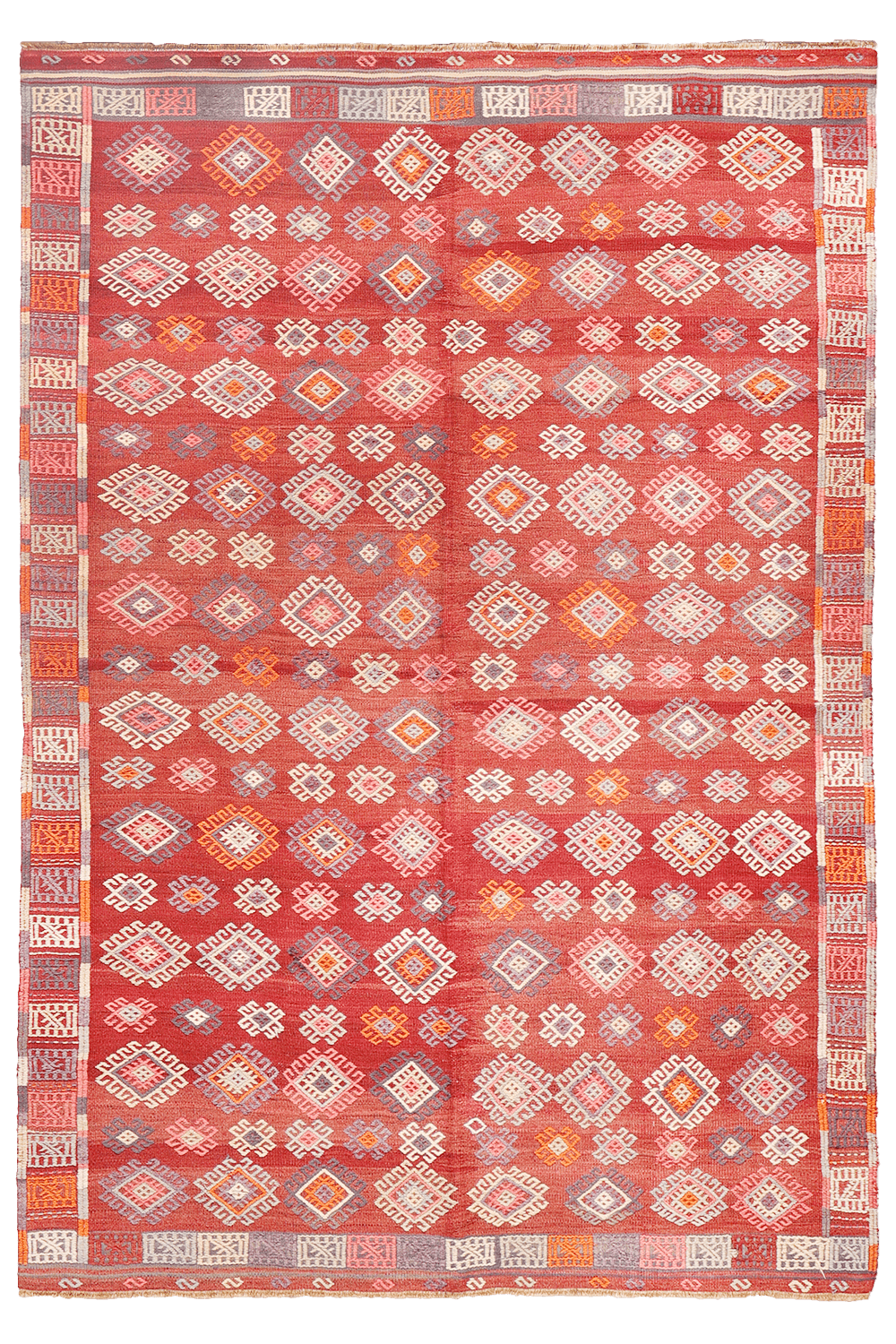1,750.00 €
Dursunbey Kilim (Balıkesir, Turkey)
Originating from Dursunbey—formerly known as Balat—in Balıkesir Province, Turkey, this kilim is a lively and cheerful example of Anatolian weaving.
Woven in deep red wool, the field is adorned with pıtrak motifs created using the traditional cicim technique. The borders, also executed in cicim, feature a more structured design with geometric, square-like motifs that frame the composition beautifully.
Durable and robust, this kilim is not only visually striking but also practical, making it an excellent choice for high-traffic areas where both strength and style are desired.
Material: 100% hand-spun sheep wool
Size: 260×173 cms
Origin: Dursunbey, Turkey
Date of weaving: 1960s
In Turkish, pıtrak is a motif thought to have originated from an ideogram symbolizing the sun, without which plants cannot grow. But over the centuries this origin was forgotten, and the motif was transmitted orally under a name inspired by a familiar element of pastoral life: the small thistle well known to weavers, who spend hours removing it from wool before spinning. Does this mean, then, that pıtrak—which designates a plant whose burrs cling to clothing and especially to the fleece of animals, particularly sheep—is not connected to any ancient myth or belief? In rural settings, the Turkish expression “pıtrak gibi,” literally “like thistle,” in the sense of “as abundant as thistle,” seems to support this idea: the thistle would be nothing more than the depiction of the plant from which it takes its name, symbolizing fertility in the same way as the ear of grain or the pomegranate, solely by virtue of its vegetal character.
A solar and feminine representation
Another observation, however, brings us back to the sun and suggests otherwise: near Ankara, on the Hittite site of Alacahöyük, ritual bronze solar standards have been unearthed, dating from the second half of the 3rd millennium BC, that display a “thistle” similar to the one found on kilims. Now, as we mentioned concerning the diamond symbol, the Anatolians regard the sun as a feminine star. Pıtrak would therefore indeed be a solar representation: the center of the lozenge-shaped motif would express its feminine nature, while the lines radiating outward would signify its sparkling rays—often compared to the brilliance of a woman.
From the book “Symbolique des kilims”Ahmet Diler
1 in stock
Additional information
| Weight | 9 kg |
|---|
Subscribe and receive the lastest news
